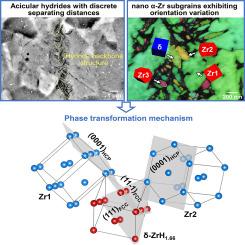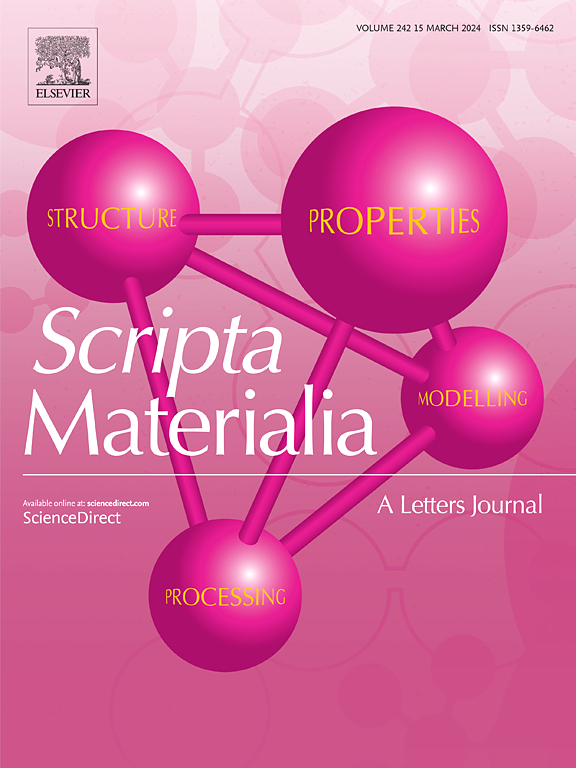锆合金中氢化物堆积结构及热瞬态诱导氢化物溶解相变
IF 5.6
2区 材料科学
Q2 MATERIALS SCIENCE, MULTIDISCIPLINARY
引用次数: 0
摘要
氢化锆会显著降低核燃料包壳的机械性能,通常被认为是由单个纳米氢化物片组成的。然而,它们的内部微观结构和相关的血小板堆积仍然不清楚。本文报道了由电火花加工的热瞬变引起的δ-氢化物部分溶解过程中发现的骨干结构特征。主链结构为针状氢化物,其分离距离离散,原始氢化物域的纳米α- zr亚晶之间与α-母晶具有明显的晶体取向,表明了氢化物溶解的δ→α转变过程。亚晶取向的变化可归因于氢化物沉淀在不一致的δ-{111}面上发生的相变。本研究结果有望为氢化物堆积结构的研究提供坚实的实验证据,并为研究锆合金中氢化物的溶解/沉淀行为提供新的思路。本文章由计算机程序翻译,如有差异,请以英文原文为准。

Hydride stacking structure and phase transformation of hydride dissolution induced by thermal transient in zirconium alloys
Zirconium hydrides that significantly degrade mechanical properties of nuclear fuel claddings are commonly expected to consist of individual nano-hydride platelets. However, their internal microstructure and the associated platelet stacking remain ambiguous. This work reports a backbone structure characteristic of δ-hydrides identified during their partial dissolution induced by the thermal transient of electrical discharge machining. The backbone structure is characterized as acicular hydrides with discrete separating distances, between which the nano α-Zr subgrains in the original hydride domain present a distinct crystallographic orientation with that of the α-parent grain, indicating the δ→α transformation process of hydride dissolution. The subgrain orientation variation can be attributed to the phase transformation accomplished on the inconsistent δ-{111} planes with hydride precipitation. The presented results are expected to provide solid experimental evidences for hydride stacking structure and new insights into hydride dissolution/precipitation behavior in zirconium alloys.
求助全文
通过发布文献求助,成功后即可免费获取论文全文。
去求助
来源期刊

Scripta Materialia
工程技术-材料科学:综合
CiteScore
11.40
自引率
5.00%
发文量
581
审稿时长
34 days
期刊介绍:
Scripta Materialia is a LETTERS journal of Acta Materialia, providing a forum for the rapid publication of short communications on the relationship between the structure and the properties of inorganic materials. The emphasis is on originality rather than incremental research. Short reports on the development of materials with novel or substantially improved properties are also welcomed. Emphasis is on either the functional or mechanical behavior of metals, ceramics and semiconductors at all length scales.
 求助内容:
求助内容: 应助结果提醒方式:
应助结果提醒方式:


